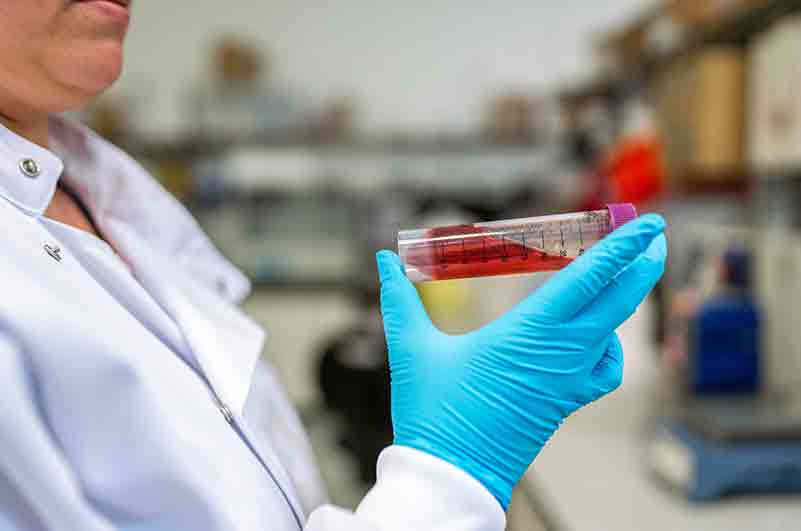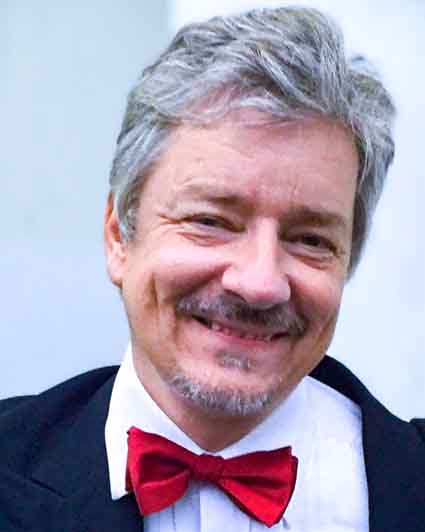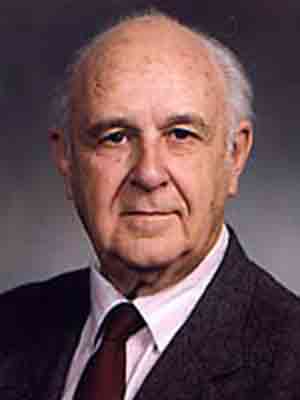Today, it is difficult to avoid the omnipresent news about the course of vaccinations against COVID-19, or about their alleged risks and harmful effects, or about their effectiveness, or lack thereof. Many people express their opinions on this subject, both publicly and privately, but few really understand how – on the basis of which principles – these vaccines work at all, what their mechanism is, what the real risks are, and how they are different and novel, compared to the traditional ones. We all know that they were developed and approved for use extremely quickly – as far as vaccines go – in less than a year; but hardly anyone realizes why it was even possible. Let's try here, at least in part, to answer these questions and, along the way, point to the partly Polish origin of the technology that made these vaccines possible.
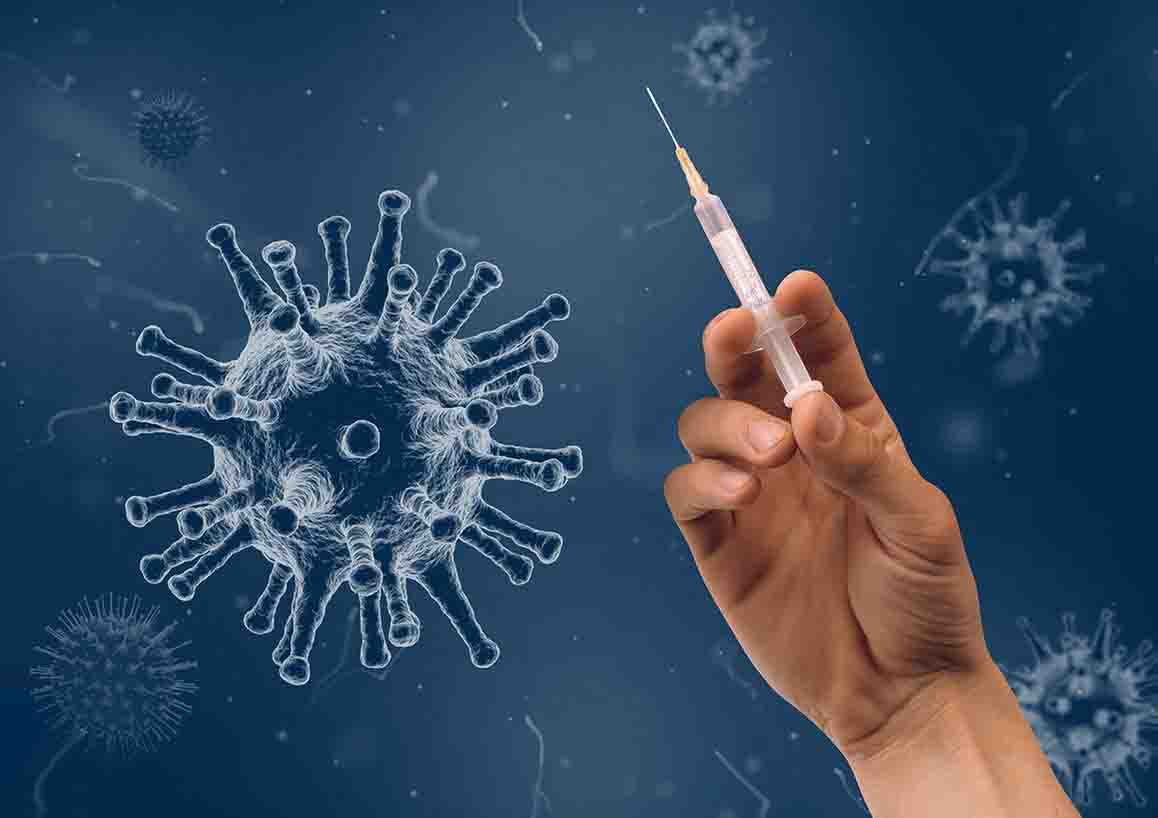
Illustration by Wilfried Pohnke from Pixabay
Although there are currently over 50 different COVID-19 vaccines under development in the world, at the moment, there are only two available on the American market, and only one, on the Polish market. One is a product of the pharmaceutical multinational Pfizer, in cooperation with the German company BioNTech; the second, not yet available in Poland, is a vaccine from the relatively young company Moderna from Massachussets. Both vaccines share a common thread, an important fragment of which passes through Warsaw, which hardly anyone knows. This common thread is the fact that these are the so-called mRNA vaccines, in the construction of which a group of scientists associated with the University of Warsaw played a significant role.
Traditional Vaccines
What exactly is a vaccine? At a fundamental level, it is a biologically active concoction imitating a natural infection with a microorganism such as a virus or bacteria, administered to a healthy person, that leads to the development of immunity.
Normally, such immunity could develop spontaneously after actual infection or disease. However, some diseases are so severe – and can cause such serious complications – that exposing one to the actual infection is very risky. In order to prevent such diseases, vaccinations are carried out, by administering to healthy people preparations obtained from either killed, or live but very weakened pathogenic microorganisms, or from their purified fragments, which, however, are characteristic enough to trigger a defensive reaction in the body and provoke the development of immunity for the future. Factors capable of triggering an immune response are called antigens .
Note that a vaccine is not a drug. The vaccine is not generally administered to infected people, because such people already had contact with a real microorganism and therefore with its full spectrum of activity. Vaccines are given to healthy people who have not yet encountered a given antigen, to "teach" their immune system how to face a new threat, but without causing the full symptoms of a potentially severe disease.
It may also happen that the vaccine is given to a person who has already had the disease to "remind" their immune system against what infection, and how to, defend itself.
The basic components of a traditional vaccine are therefore antigens – for example viral – i.e. substances that stimulate the immune system to produce protection against pathogenic microorganisms. The vaccine antigen introduced into the body stimulates the cells of the immune system to produce specific antibodies, i.e. proteins through their structure specialized in neutralizing this antigen.
The so-called immune memory cells that provide the long-term protective effect of vaccination, can also be "programmed" in this process so that, if they come into contact with a pathogenic microorganism, they lead to the production of specific antibodies that prevent the disease from developing. So the incredibly complex – but fabulously effective – body's natural defenses are thus being prepared for the fight.
Vaccination against a given disease usually consists of several doses to be administered at specific intervals after reaching the required age, so that the recipient's immune system can achieve the best possible ability to combat the disease.
A vaccine is therefore a clever way of eliciting an otherwise natural immune response in the body without causing a potentially serious disease. The main goal of a vaccine against an infectious agent, such as the virus that causes COVID-19, is to teach the immune system what that virus looks like. A trained immune system will vigorously and effectively attack the virus if it ever enters the body.
In addition to the antigen, each vaccine contains preservatives and stabilizers, as well as immune boosting and accelerating substances known as adjuvants, and the manufacturing process can also leave traces of various types of other side compounds, which in turn become contaminants of the vaccine. These substances may indeed cause in some, usually very few, recipients even serious reactions, either allergic or toxic, which has undoubtedly contributed to the rise of anti-vaccine sentiments among some people.
In general, however, no one who has even an elementary medical knowledge, questions the validity of the very idea of a vaccine. They contributed to the elimination of some very serious diseases in the past. Some say that "Vaccines that prevent infectious diseases are the greatest medical innovation of all time." [27]
In fact, in biology, and in medicine in particular, nothing appears in a decidedly black-and-white perspective — rather, we always deal with a cost-benefit calculation.
A Short Course In Molecular Genetics
Before we can explain how novel mRNA vaccines work, we will need a basic understanding of the process of genetic expression, i.e. how the genetic material – the life instructions contained in our genes – are interpreted and translated in practice into the appearance, structure, and functioning of our body.

DNA Structure and the Alphabet of Life (Source: American Society of Human Genetics)
Everyone knows today that genetic information is stored in a living cell in the form of a double helix of deoxyribonucleic acid (DNA). DNA is made up of "building blocks" called nucleotides. Without going into detail, suffice it to say that there are four types of DNA nucleotides, denoted by the letters A, C, G and T, and that these letters are derived from the chemical name of the specific nitrous base that gives the nucleotide its symbol (adenine, cytosine, guanine, thymine). Since the 1960s, we have known that these four letters are the alphabet of life, in which the genetic code of all living organisms on Earth is written.
All the information that gets passed down from generation to generation about how an organism is built and how it is supposed to function, are strings of these four letters, nucleotides coiled into the famous DNA spiral and - in the case of, for example, human cells - tightly packed in the, so-called, chromosomes inside the cell nucleus.
Nucleotides in general are of fundamental biological importance, the more so, as they are not only components of our genetic material, but are involved in a number of fundamental processes in the body. First, they store energy. Second, working as the so-called enzyme cofactors, they catalyze the biochemical reactions in the cell. Third, they are used for intra- and intercellular communication. Fourth, they are a factor in the transport of various components needed by cells. But, despite their importance, they are not the basic ingredients of life.
Gene Expression
How is genetic material used in practice by the cells of our body?
As it happens, the entire structure, appearance and functioning of ourselves and all other living things on Earth depend on substances called proteins. Proteins perform most of the tasks in a cell necessary for its proper functioning. Active proteins – called enzymes – play important regulatory roles inside the cell, catalyzing (i.e. accelerating, or even enabling) chemical reactions. Proteins are also the basic building blocks of our bodies. Proteins are hormones that inform and coordinate the functioning of many of the body's tissues, too. It will not be an exaggeration to say that we are not only made out of proteins - and of course water! - but that we can function only thanks to them.
There are countless types of proteins. The amazing variety comes from the fact that they themselves are made up of more basic, smaller "building blocks" called amino acids, and these amino acids come together in various combinations. Each protein is a specific string of amino acids, the sequence of which determines the biological and chemical properties of this compound. Just as from a few types of LEGO® bricks you can create countless forms and structures – or from twenty-some letters of the alphabet, it is possible to construct countless sentences – so it is that, from a relatively small number of different amino acids – twenty to be exact – an almost infinite number of different proteins can be created, each with different biological and chemical properties.
And here we come to the crux of the mystery about how the genetic code works. The sequence of nucleotides that make up DNA is nothing more than a record of the sequence of amino acids in proteins that the cell must produce. Each sequence of three consecutive nucleotides – called a codon – is a recipe for the use of a selected amino acid "brick". For example, the nucleotide sequence C-T-A corresponds to the amino acid called leucine, and A-G-C corresponds to serine. Each DNA codon has a corresponding amino acid.

Translation of a DNA sequence into an amino acid sequence in a protein (author's illustration)
So, the combinations of the four nucleic bases, that is, the different sequences of the four basic "letters" of the genetic code – taken three at a time – correspond to a specific sequence of amino acids in proteins, while the sequence of amino acids, in turn, determines the biological function of a protein and manifests itself in all the diversity we see in the living world. We won't go into any further details here, which, while fascinating, are complex. Suffice it to say – to put it very simply – that the genetic code is essentially a recipe for proteins, encrypted in the form of DNA.
DNA is stored in chromosomes in the cell nucleus. Proteins, in turn, are produced in ribosomes, which are structures inside the cell (in the cytoplasm). Ribosomes are "protein factories" inside the cell. So how does genetic information get out of the nucleus and gets passed down to the ribosomes?
mRNA
For this purpose, ribonucleic acid (RNA), the other carrier of the genetic code, and in particular its form called messenger RNA, abbreviated mRNA, relays this information out of the nucleus. The information encoded in DNA is not directly used in the production of proteins.
DNA never leaves the nucleus of the cell, as it is a very valuable material, and at the same time fragile and could easily be damaged in transport. Damage to the DNA, on the other hand, would have far-reaching consequences for the body, as it would destroy the fundamental instructions of life. Therefore, the transfer of information to the ribosomes is mediated by mRNA, which is built in the process of transcription in the nucleus, i.e. copying information from the DNA strand. After leaving the nucleus, the information encoded in the mRNA is read in the process of ribosomal translation, i.e. the conversion of the four-letter genetic code into the language of amino acids.

Transcription and translation of genetic material - the canon of molecular genetics (author's illustration)
So the messenger RNA (mRNA) is also a recipe for a protein, but one that can be directly used for its synthesis. DNA – stored and protected from damage in chromosomes – contains valuable information on how to build proteins. Proteins perform most of the functions in the body, and their production requires an intermediary, mRNA, which is a copy of a fragment of the genome, used to produce some particular protein. So you can consider mRNA as a specific protein recipe, while DNA is the complete library of all the recipes for any protein ever needed for the body to function properly.
On average, an mRNA particle consists of about 2-3 thousand nucleotides, thus encoding a protein molecule up to about a thousand amino acids long. So it is a long string, and for the sake of distinction, its ends are marked with the symbols 3' (pronounced three-prime) and 5' (pronounced five-prime) — their names derive from their structure, but we don't have to get into that.

MRNA structure: 5'-end cap; UTR (UnTranslated Region) - non-coding region; poly-A tail - stabilizing (author's illustration)
It is enough for us to know that the mRNA consists of a genetic payload, i.e., a more or less long chain of nucleotides (coding sequence), non-coding regions at both ends, and at the 5 'end, there is a special chemical structure called a "cap." More on this in a moment, in the context of the participation of Polish scientists in the research.
Genetic Therapy
We previously wrote about the recently deceased Polish pioneer of genetic therapy, who mainly dealt with DNA research. DNA – as the Essence of Life – would seem to be an ideal target for therapeutic intervention, i.e. repairing what is not functioning properly in the organism. However, DNA-based therapies face serious difficulties.
A therapeutic delivered in the form of DNA from the outside, in order to be expressed, must first pass through two cell barriers (the cell membrane itself, and the membrane surrounding the cell nucleus), enter the cell nucleus, and integrate with our genome – in a way, become part of the genetic material of the cell – so as to become a template for the production of mRNA.
Not only is this technically difficult, but in trying to treat one, we could possibly induce another disease through unintentional changes in the content or a different interpretation of our genome. Just as inserting or deleting even a single character in a sentence can change its meaning, so inserting or losing even a single nucleotide in a DNA strand can dramatically alter or disrupt the function of the entire cell.
As an aside, let us add here, that these problems with the use of DNA have also been preliminarily overcome and several experimental vaccines on the basis of DNA are in preparation (including, e.g., the Johnson & Johnson vaccine). We will write more about them, but here we focus on mRNA-based vaccines.
On the other hand, it is enough to deliver mRNA into the cytoplasm and it performs its function there. An mRNA molecule is only a relatively short fragment of the genome, specialized as a recipe for one specific protein. So it could be an ideal carrier of a limited amount of very specific information — potentially the basis for precise and individualized treatment of various diseases.
This is a slightly more sophisticated method of preventing infection than the standard conventional vaccine. Instead of administering the antigen – often in the form of a whole virus – and expecting the immune system to respond, the cells are given a blueprint for producing such an antigen, a protein fragment by which the immune system can use to "learn" to recognize an intruder.
Difficulty with the mRNA
Research on mRNA has been conducted for a long time. A biochemist of Hungarian origin, Katalin Karikó, has been doing this since 1978. Her path to success was not easy, and her road paved with difficulties, as the fruitfulness of such research was generally not believed at the time. However, her discoveries, among others, managed to overcome the main difficulties in obtaining an effective vaccine.
First of all, mRNA is inherently unstable. It is one of the most unstable biological molecules and is broken down fairly quickly by enzymes in the cytoplasm. As a result, administration of "naked" mRNA does not bring the expected results — it is simply ineffective.
A more serious problem was the immunogenicity of RNA, its ability to elicit a strong immune response leading to inflammation. So, not only is RNA broken down easily, it also causes severe allergic reactions! This makes sense from the point of view of the body's defenses against infection with "foreign" genetic material, but makes it difficult for external therapeutic material to enter the cell. In order to counteract the immune reaction, it was necessary to develop a technique of creating a special shell made of various types of lipids to enhance the stability of this molecule. It is this unique lipid coat that protects RNA against degradation in its therapeutic use.
An additional problem was that externally supplied ("exogenous") therapeutic mRNA must compete for access to the cellular protein-producing machinery with the natural ("endogenous") mRNA produced in the cell — so it must be more efficient to partially take over this machinery and lead to the production of the desired protein.
The Polish Invention
A modification of the composition of the mRNA molecule – the replacing of one specific atom, from among the tens of thousands of atoms normally comprising it – made it possible to "camouflage" and hide the exogenous, therapeutic mRNA from the immune system and enzymes in the cytoplasm that constantly "clean" the cell of unwanted substances.
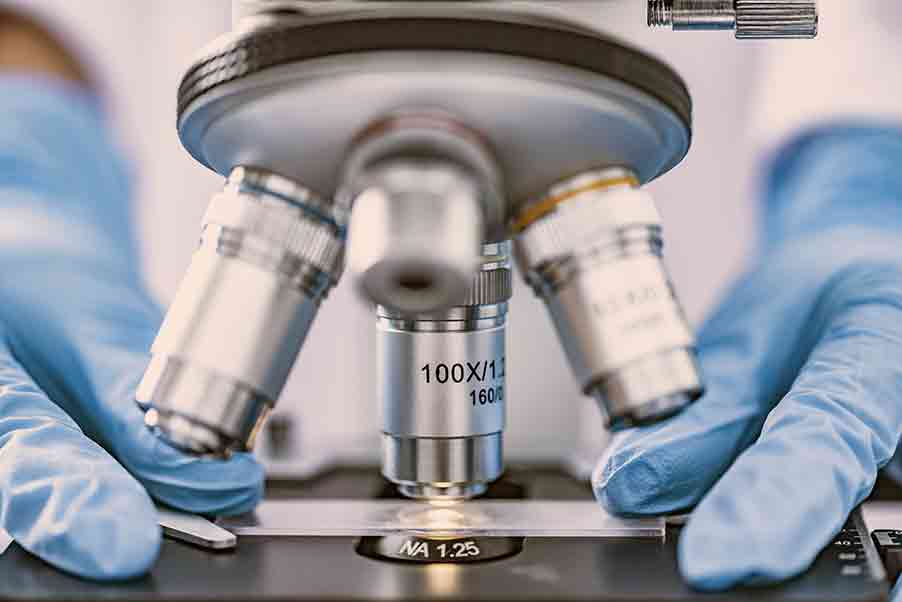
Source: Chokniti Khongchum from Pixabay
The invention of a team of Polish scientists led by prof. Jacek Jemielity of the University of Warsaw, allowed mRNA to be "smuggled" into the cell and to obtain greater efficiency compared to endogenous mRNA. They introduced subtle chemical modifications to the molecule, thanks to which it acquired new, desired properties. It is worth mentioning that Polish researchers were among the pioneers in this field. It all started in the early 1980s, when, for example, prof. Edward Darżynkiewicz conducted research on the mRNA structure at the University of Warsaw. When this research began, no one thought of any application in practical therapy at all.
The Poles made a precise biochemical modification in the region of the mRNA molecule called "cap 5'" — this is the place where enzymes that start the production of the protein, and those that decompose mRNA attach, so it is a key marker of this molecule. Normally, mRNA is active for a short time – the cell's enzymes destroy it within minutes or hours – but thanks to this modification, it decomposes much more slowly. The amount of protein produced on this basis also increases significantly. This makes it possible to practically use the modified molecule as a vaccine against tumors or microbes.
Professor Jemielity describes it best himself:
By replacing one oxygen atom with a sulfur atom in a very characteristic element of this complex biomolecule, called the cap (the mRNA molecule consists of about 80,000 atoms, on average), we were able to simultaneously extend the life of mRNA in the cell, and increase its competitiveness in relation to the native mRNA. All this resulted in a significant increase in the efficiency of the translation process, thanks to which much more therapeutic protein was produced from the same amount of mRNA. Such a recipe for almost any protein containing the said modification can be obtained by biochemical methods in a test tube, which makes this method universal and easy to use. [4]
Thus, not only the Polish inventions made it possible to obtain the desired properties of mRNA, but they were at the basis of its production in quantities sufficient for practical use.
As mRNA is immensely universal – it can be used to encode any protein – this means that the number of potential applications of this technique is practically unlimited. Any disease resulting from an inborn lack of a substance essential for the functioning of the body can potentially be treated with this method. Changing the disease "target" from one disorder to another does not require the development or identification of a completely new drug, only a change in mRNA nucleotide sequence.
Preventive antiviral vaccines are just one of the therapeutic uses of mRNA. The next in line are supposed to be therapeutic anti-cancer vaccines, or genetic therapies for various rare diseases for which there has been no cure at all so far.
The Polish Patents
The success of biochemists from the University of Warsaw became widely known in late November 2016. In this context, the Poles turned out to be competent in terms of deliberate business practices and – thanks to the cooperation with the American Louisiana State University (LSU) – patented the invention, both in Poland, and in the USA. The terms of cooperation and participation of the University of Warsaw in the ownership of the patents were agreed to — patents, because two, slightly technically different, were submitted. Finally, the results were officially published.
It was a scientific breakthrough on a global scale and it did not take long for other research centers and pharmaceutical companies to become interested. Dr. Robert Dwiliński, director of the Technology Transfer Center at the University of Warsaw, stated that this discovery could be compared with the invention of the use of radium and radioactivity in medicine:
Initially, this discovery was underestimated, but later it turned out to be of enormous importance. The same is true of our mRNA research, it is an invention on a world scale. [14]
The Licensing — "Controversial" for Some
After the discovery was made, the Poles were looking for partners to use it in practice. Since the introduction of a new type of therapy – and this one is fundamentally different from any used so far – is associated with almost unimaginable costs for clinical trials, measured in billions of dollars, no one in Poland – even the Polish state – could afford to take up such a challenge. "The commercialization of a new drug costs about $2 billion. This is more than the annual budget for the entire Polish science" explains prof. Jemielity.
So there occurred a sale of patent licenses to foreign entities. The invention itself was created in 2005, and the first patent application was submitted the following year. The license was signed in 2010/2011 and was eventually sold for a total sum of $610 million, with an additional clause ensuring future revenues as production was being commercialized and licensed further. The licensor, i.e. the University of Warsaw, together with other partners, is thus assured continuous share of the income from its inventions.
This is perhaps the most spectacular example of commercialization of scientific research in Poland, but not necessarily well received at the time by the uninitiated. "The Polish patent has already earned EUR 610 million, but ... for a company from Germany. Have we got rid of the hen that lays the golden eggs?" Gazeta Wyborcza entitled its 2016 article (incorrectly identifying the currency in this valuation) [2].
And caustic comments appeared on the Internet, such as, for example, those from an anonymous commentator on one of the portals: "So, [it's a] classic. Polish university invents something, and everyone makes money on it, except any Polish company ..." Fortunately, not everyone shared this – such a typical Polish – fatalism. There were also statements along the lines of "Congratulations, and I wish you further success!", which instill, at least, a modicum of optimism.
BioNTech, or "Biopharmaceutical New Technologies"
After tedious negotiations, the license for the Polish invention was finally sold to a German company, which was already a leading research institution in this field, and which the whole world heard about in 2020. Of course, I am talking about the BioNTech company (it is an abbreviation of Biopharmaceutical New Technologies), with its headquarters in Mainz, Germany, founded in 2008 and led by prof. Ugur Sahina from the local university, who happens to be an immigrant of Turkish origin.
The city of Mainz is otherwise known as the cradle of modern printing, thanks to a individual named Gutenberg, but has now gained a whole new notoriety as the birthplace of one of the mRNA-based COVID vaccines. A vaccine that probably wouldn't exist, if not for the team of Poles from the University of Warsaw.
Overall, "BioNTech's role was absolutely crucial," says Prof. Jemielity, and adds:
They are pioneers in the development of mRNA-based anti-cancer vaccines. They have been doing this for many years. It is they, who identified the protein that distinguishes a tumor cell from a healthy cell, and on this basis they prepare the mRNA for a vaccine. They liked our invention very much: this is the first time they saw a single modification that produces such a big effect. And today I cannot imagine that anyone else would extract as much from our invention as they did.
BioNTech has conducted laboratory tests. The following years saw clinical trials on patients conducted by this company, which led to the sublicense of the Polish invention to the giants in the pharmaceutical market, i.e. such industrial powers as Sanofi-Pasteur from France, or La Roche from Switzerland. Each such sublicense also generates some additional income for Poland. BioNTech, for its part, spent a significant part of the money from the sale of licenses on further development and research of vaccines, including anti-cancer ones.
Today, everyone has heard about how, the even more powerful company, Pfizer, in cooperation with the German BioNTech, was the first to obtain approval to use an innovative mRNA technique to produce vaccines against COVID-19. Unfortunately, no one in the mainstream media recognizes the role of Polish scientists in building the foundations for this scientific success.
Is the COVID Vaccine Really Polish?
First, Dr. Jemielity himself readily admits that the whole undertaking was only possible thanks to the cooperation with partners from America and Germany. The Poles created the invention, but it ended up a small part of the entire initiative. Today, huge pharmaceutical companies are responsible for the rest, and they are the ones who can afford the expenses of clinical research, implementation, production, and distribution.

Source: hakan german from Pixabay
Professor Jemielity recalls:
Investment in science is a high-risk investment, because we do not know when it will pay off. It could be tomorrow or, just as likely, in 10 years. It happens that some research results change the underpinnings of the whole society after 50 years. It is estimated that 1 out of several dozen inventions can be commercialized. Our case is a bit outside of the norm.
Second, BioNTech is not the only company involved in mRNA vaccine research. The "family tree" of the idea of this vaccine has many branches, and it draws upon the achievements of many researchers around the world. As Poles, we can feel proud that somewhere, in an important branch of this tree, there is one of the main twigs leading to the successful creation of such a vaccine, that Polish scientists played a significant role.
The Viral Code
The research, to which Polish scientists contributed greatly, finally reached such a level that, at the beginning of 2020, in the face of the emergence of the new SARS-CoV-2 coronavirus, pharmaceutical companies were actually already primed for action. All that was needed was to work out the genetic code of this microorganism – the feat that was already achieved in January – and clinical trials of the new vaccine based on the mRNA mechanism could be started. Hence, such rapid progress on its approval and production.
Those who were making vaccines against this coronavirus this year were relying on sequence information published by Chinese scientists in early January 2020.
said Dr. Karikó who, today, is a member of the senior management at BioNTech.
The publication of the DNA sequences by Chinese scientists – as far as we know – was not in any way sanctioned or even permitted by the PRC government and the leading party there, but rather was a grassroots humanitarian initiative, not agreed upon with the authorities, for the benefit of all mankind. [30] One thing is for sure, it was critical to the rapid decoding of the genetics of the virus and the development of vaccines around the world.
Professor Karikó skillfully sums up what the innovative use of mRNA in vaccine development is all about:
[Traditional] vaccines containing killed viruses or viral proteins will only induce antibodies," Karikó explained, referring to how conventional vaccines work. "Meanwhile, mRNA vaccines, in addition to antibodies, also induce cellular immune response," she added, "because the encoded viral proteins are synthesized inside the cell of the vaccinated person." This is an immunological double-whammy: the mRNA injected makes one's body literally synthesize the same proteins that the virus will synthesize, as though it's a dress rehearsal for real infection.
Thus, with this type of vaccine, the genetic code of a pathogenic microorganism such as SARS-CoV-2 is used as if against itself, using the body's natural defenses.
Pfizer or Moderna?
BioNTech is just one of the many players in the rapidly expanding arena of mRNA vaccine research. The second powerful force in this field turned out to be Moderna Therapeutics, based in Boston – a city known for such science giants as Harvard and MIT universities – a company that started operating in 2011, and therefore relatively recently.
It might be sarcastically noted, that Moderna, at the beginning of its operation, was very successful primarily in terms of propaganda and attracting investment capital, against the backdrop of a complete absence of any visible scientific results. It seemed to act, for a long time, only on the basis of great promises – and also in great secrecy, without publishing any of its results – but today, no one doubts the real effectiveness of its efforts.
Their coronavirus vaccine, called mRNA-1273, was the first to be produced, but the second to be officially approved for use. A fun fact is that it was available as early as two days after the disclosure of the genetic sequence of the virus, on January 13, 2020. It took no more than one weekend to construct it, and it was ready even before the first cases of coronavirus were detected in the United States. This is the fastest vaccine development in history. [30] Of course, relying on a completely untested and innovative technology, it could not have been admitted for wide use until December last year, incidentally, losing this race to Pfizer/BioNTech by a few weeks.
Both vaccines differ in their chemical structure, the method of producing the active substance, and the method of delivering mRNA to cells, but they undoubtedly share a common mechanism of action.
Both vaccines require two injections, several weeks apart. People receiving the Pfizer vaccine receive two doses three weeks apart, and those receiving the Moderna vaccine two doses four weeks apart.
Both require storage and transport at very low temperatures – all because of the instability of the RNA molecule and the lipid envelope – although Moderna's does not need as ultra-low temperature as the one from BioNTech.
How safe are mRNA vaccines?
Ultimately, of course, no one knows. First of all, this type of vaccine has never been used before, except for a small attempt to counter the Ebola virus. Some people believe that these kinds of preparations should not really be called vaccines, as they are completely different from anything that was done before. It is undoubtedly a new type of biotechnology.
It is possible, and even very likely, that this technology is completely safe.
As was reported about the Pfizer/BioNTech vaccine in the prestigious New England Journal of Medicine, "The incidence of serious adverse events was low and was similar in the vaccine and placebo groups. ... Safety over a median of 2 months was similar to that of other viral vaccines." [31]
Apparently, none of the mRNA molecules administered can enter the cell nucleus, where it could be incorporated into DNA, which is the scenario many people fear. It is a kind of canon of molecular biology. But is there any possibility – in general, in nature – for such reverse transcription to take place? It turns out that there is, thanks to an enzyme called – not too creatively – reverse transcriptase, which some viruses (so-called retroviruses) are equipped with. But, on the other hand, SARS-CoV-2 is not one of them — as everyone knows, it is a coronavirus. But do we actually know everything there is to know about the processes of interpreting the genetic code? Certainly not.
To our advantage is the instability of mRNA molecules that are removed from cells immediately, just after they have performed the task of producing the desired proteins. After completing the task, mRNA is destroyed and its life span in the cell is inherently short.
The mRNA-based vaccines are the result of over thirty years of research by many scientists, including Polish ones, and its safety has been tested in – albeit accelerated, yet, hopefully – meticulous clinical trials. And vaccination gives us immunity, bypassing all the problems related to infection with the virus itself, and in a very effective way.
Allergies and Long-Term Effects
Can therapeutic mRNA trigger the immunological cascade and cause – for example – the so called, anaphylactic shock? Injection into the arm is no different to any other vaccine, but the rate of short-term side effects appears to be higher than, for example, in a flu vaccine. [32] However, hundreds of thousands of people have already received these vaccines, and none of them have reported any serious health problems other than allergic reactions, which are treatable, with some precautions. In any case, no one has died from these vaccines yet.
Source: ThisisEngineering RAEng from Unsplash
Perhaps the biggest problem so far encountered is that the lipid component of the vaccine – the protective sheath around the mRNA that makes it more stable – can cause short-term adverse reactions to vaccination, such as fatigue or muscle aches. Our body reacts badly to lipid compounds administered intramuscularly, and this is the way of administering an mRNA vaccine. Hence, some side effects after receiving one of these vaccines. So it is not so much the mRNA that is the problem, but its "packaging".
But we still have to take into account the fact that we are dealing here with a fairly short research period. Usually, it takes many years, even decades, to create safe and effective vaccines. Now we are dealing with preparations which, in fact, have been studied for thirty years, but in the context of vaccine development, only for a few years, and in the context of antiviral vaccines — just for about a year.
Each manufacturer must, as part of their application for approval of a new drug by the relevant US federal agency (Food and Drug Administration, FDA), present the safety results of its use in... wait for it... less than two months of clinical trials in the, so-called, third phase (i.e. carried out on tens of thousands of volunteers). Two months is indeed, by common sense, probably not much for such an undertaking...
So no one today can – with full responsibility – answer the question of what the long-term effects of these vaccines will be. Will there still be no complications after two, five, or ten years after the immunization? Research continues, and must necessarily take two, five, or even ten years – there are no magic shortcuts here – or guarantees, for that matter. The risk is always there. For now, the results are optimistic, and the benefits appear to outweigh any possible negative effects. Time will tell.
Due to the COVID-19, mRNA vaccines have received enormous research funding – including, in large sums, from the US government – and attracted the involvement of the largest players in the pharmaceutical industry (although Pfizer, at its own behest, did not receive federal funding for research and development). This made it possible to overcome the normally huge bureaucratic and financial hurdles. Some skeptics say, however, that, due to the rush and the financial stakes, clinical trials were "designed to succeed".
Hence, Switzerland, for example, is still very cautious about approving these new vaccines, and is holding back for the time being, even though a mass vaccination plan is already being prepared there. Swissmedic, the Swiss medical regulatory body, said there was still a lack of important data on safety, efficacy and quality. They reached out to manufacturers, who provided additional data from their research, and the final decision is now expected soon. [33]
Who Should Be Vaccinated?
Should everyone take these vaccines? Probably yes, especially those people with the highest risk of death, such as the elderly over 65 years of age, for example, or people with other factors for whom that risk increases in combination with COVID-19. These include people with respiratory problems, hypertension, cancer, diabetes, but also, it is believed, obese individuals.
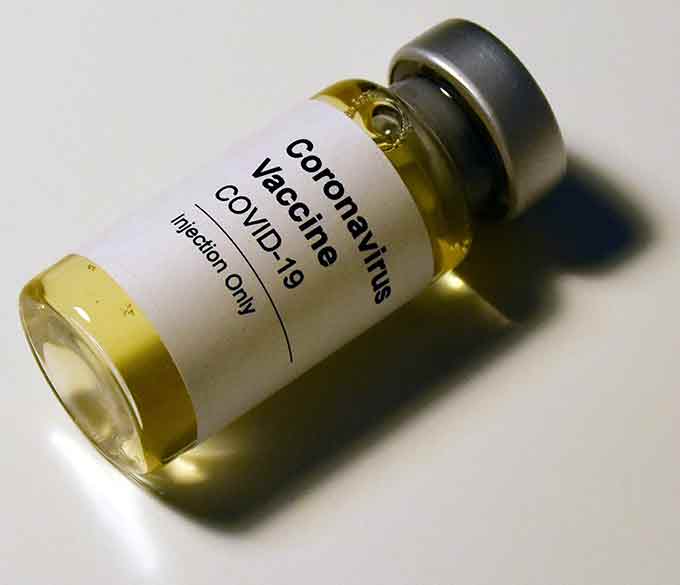
Source: Hakan Nural from Unsplash
Everyone, without exception, should be free to choose, and this choice should be dictated by solid research results — for which, unfortunately, we will have to wait quite a while.
For now, there are not enough vaccines either in Poland, or the United States, and they are rationed due to insufficient supply and high demand. So, most people in the world do not currently have any dilemma — there simply are no vaccines for them yet.
The Future of mRNA Vaccines
Before the pandemic was even declared, science had already reached a stage from which work on these vaccines could be accelerated. This is why they were developed in such a short order. It was just like shifting a railroad switch ahead of a speeding train, thus rerouting it: instead of cancer vaccines – a vaccine against the virus – but the principle of operation remains the same.
So it is to be expected that what we are seeing in the area of mRNA vaccines is just the beginning. The therapeutic mRNA technique will certainly be used in medicine to fight other diseases, not only the coronavirus, and we will definitely hear about it in the future.
Finally, let us say this to Professor Jemielity and the entire Polish team from the University of Warsaw: "Congratulations and we wish you further success!"



